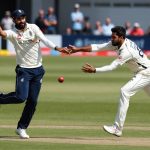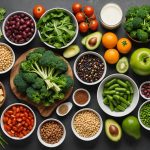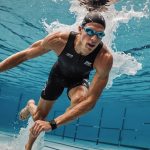Unlocking Peak Performance: Strategies for Biathletes to Boost Skiing Efficiency with Focused Strength Training
Understanding the Demands of Biathlon
Biathlon, a sport that combines cross-country skiing and target shooting, is one of the most demanding winter sports. It requires a unique blend of endurance, strength, and precision. For biathletes, optimizing their skiing efficiency is crucial to achieving peak performance. Here, we delve into the strategies and training methods that can help biathletes enhance their skiing capabilities.
The Role of Endurance Training
Endurance training is the backbone of any biathlon program. Biathletes need to be able to maintain a high intensity over long periods, often in challenging weather conditions. A well-structured endurance training plan includes various types of workouts, such as zone training and polarized training.
Topic to read : Unlocking Peak Fielding Agility: Strategies for Professional Cricketers to Elevate Their Game
-
Zone Training: This involves dividing the athlete’s heart rate into different zones, each corresponding to a specific intensity level. For example, Zone 1 might be light aerobic exercise, while Zone 5 is maximum effort. By training in different zones, athletes can improve their cardiovascular fitness and increase their lactate threshold.
-
Polarized Training: This approach involves spending a significant amount of time training at low intensities (Zone 1-2) and a smaller amount of time at high intensities (Zone 4-5). This method has been shown to be highly effective for endurance athletes, as it allows for a balance between recovery and intense training.
Additional reading : Maximizing Performance: Essential Tips for Wheelchair Basketball Athletes to Fine-Tune Their Chair Setup
Strength Training for Biathletes
Strength training is often overlooked in favor of endurance work, but it is essential for improving skiing efficiency and overall performance.
Key Strength Exercises
Here are some key strength exercises that biathletes should incorporate into their training program:
-
Squats and Lunges: These exercises target the legs, glutes, and core muscles, which are critical for skiing.
-
Squats: Stand with feet shoulder-width apart, then bend knees and lower body until thighs are parallel to the ground.
-
Lunges: Step forward with one foot and lower body until back knee almost touches the ground. Alternate legs.
-
Leg Press: This exercise targets the quadriceps, hamstrings, and glutes.
-
Sit in a leg press machine and push the platform away from you with your feet.
-
Core Exercises: A strong core is essential for stability and balance on the skis.
-
Planks: Hold a plank position for 30-60 seconds.
-
Russian Twists: Lie on your back with knees bent and feet flat on the floor, then twist your torso to left and right.
Example Training Plan
Here’s an example of how a biathlete might structure their strength training week:
| Day | Exercise | Sets | Reps |
|---|---|---|---|
| Monday | Squats | 3 | 10 |
| Leg Press | 3 | 12 | |
| Planks | 3 | 60s | |
| Wednesday | Lunges | 3 | 10 |
| Russian Twists | 3 | 15 | |
| Calf Raises | 3 | 15 | |
| Friday | Deadlifts | 3 | 8 |
| Step-Ups | 3 | 12 | |
| Side Planks | 3 | 60s |
Managing Lactic Acid Buildup
Lactic acid buildup is a significant issue for endurance athletes, including biathletes. Here’s how to manage it:
Use of Supplements
Products like SportLegs have been praised by athletes for their ability to reduce lactic acid buildup and improve performance.
- SportLegs: This supplement contains natural muscle fuel, calcium, magnesium, and Vitamin D to help prevent lactic acid formation. Athletes like Mike Olheiser, who won multiple World and US National Championships, and the Barnes twins, who competed in several Olympics, have credited SportLegs for their improved performance and reduced muscle pain.
Training Techniques
In addition to supplements, specific training techniques can help athletes manage lactic acid:
- High-Intensity Interval Training (HIIT): This involves short bursts of high-intensity exercise followed by periods of rest or low-intensity exercise. HIIT can help increase the lactate threshold, allowing athletes to perform at higher intensities without accumulating as much lactic acid.
Mental Preparation and Recovery
Mental preparation and recovery are as crucial as physical training for achieving peak performance.
Mental Training
- Visualization: Athletes can visualize their performance, including the race course, shooting sequences, and overcoming challenges. This helps build mental toughness and confidence.
- Positive Self-Talk: Encouraging positive self-talk can help athletes stay focused and motivated during intense training and competition.
Recovery Strategies
- Rest and Sleep: Adequate rest and sleep are essential for physical recovery. Athletes should aim for 7-9 hours of sleep each night.
- Nutrition: A balanced diet rich in carbohydrates, proteins, and healthy fats is vital for energy replenishment and muscle repair.
- Stretching and Foam Rolling: Regular stretching and foam rolling can help reduce muscle soreness and improve flexibility.
Connecting with Elite Athletes and Coaches
Learning from elite athletes and coaches can provide valuable insights into effective training strategies.
Quotes from Elite Athletes
-
“I couldn’t have done it without SportLegs. It helped me boost my lactate threshold and perform at a higher level,” says Mike Olheiser, a multiple World and US National Champion.
-
“Polarized training has been a game-changer for me. It allows me to balance my training and recovery effectively,” says a professional biathlete.
Insights from Coaches
- “A well-structured training plan that includes both endurance and strength training is key to improving skiing efficiency,” advises a head coach of a national biathlon team.
Practical Advice for Biathletes
Here are some practical tips for biathletes looking to boost their skiing efficiency:
Detailed Bullet Point List
- Set Clear Goals: Define your short-term and long-term goals, whether it’s improving your skiing technique or preparing for a specific race.
- Create a Balanced Training Plan: Ensure your training plan includes a mix of endurance, strength, and recovery sessions.
- Use Technology: Utilize heart rate monitors, GPS devices, and other tools to track your performance and adjust your training accordingly.
- Connect with Other Athletes: Join training groups or connect with other biathletes to share tips and stay motivated.
- Focus on Nutrition: Pay attention to your diet to ensure you are fueling your body for optimal performance.
- Prioritize Recovery: Make sure to include rest days and recovery sessions in your training plan.
- Seek Professional Advice: Work with a coach or sports scientist to tailor your training program to your specific needs.
Achieving peak performance in biathlon requires a holistic approach that includes focused strength training, effective endurance training, and careful management of lactic acid buildup. By incorporating the strategies outlined above, biathletes can significantly improve their skiing efficiency and overall performance.
Whether you are an aspiring Olympic athlete or a recreational biathlete, understanding the demands of the sport and applying the right training techniques can make a substantial difference. Remember to stay connected with the sports science community, learn from elite athletes, and always prioritize recovery and mental preparation.
In the words of Tracy and Lanny Barnes, Olympic biathletes, “SportLegs has been a game-changer for us. It gives us more power on the skis and helps us maintain our shooting aim steadier.” With the right combination of training, nutrition, and mental toughness, you too can unlock your peak performance and excel in the challenging world of biathlon.






